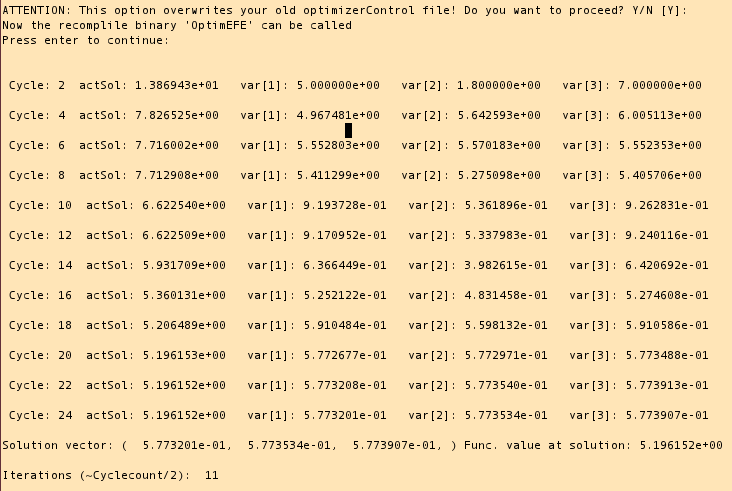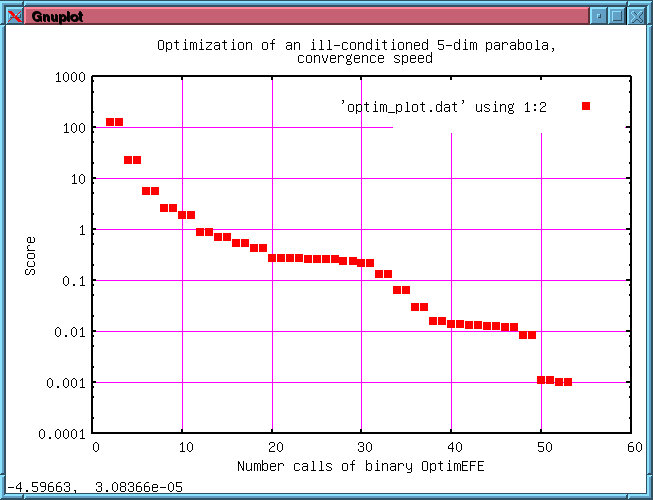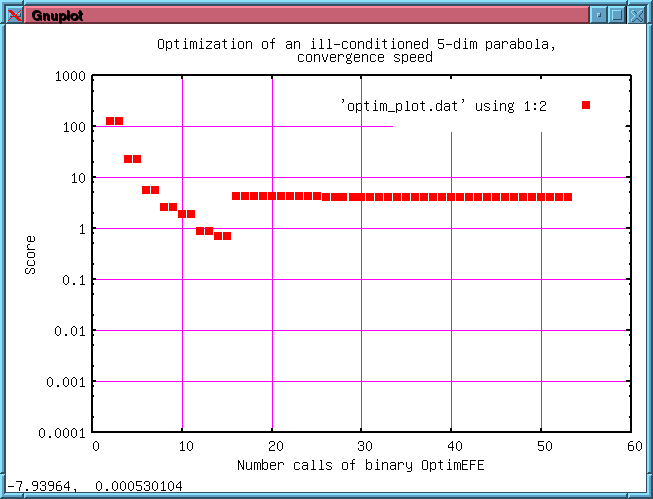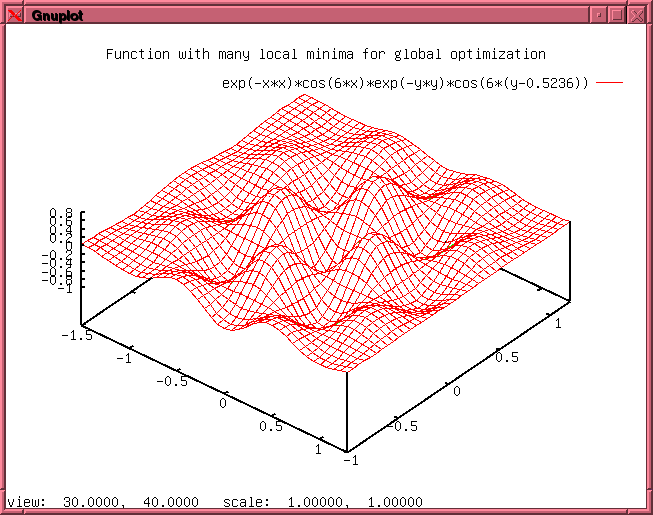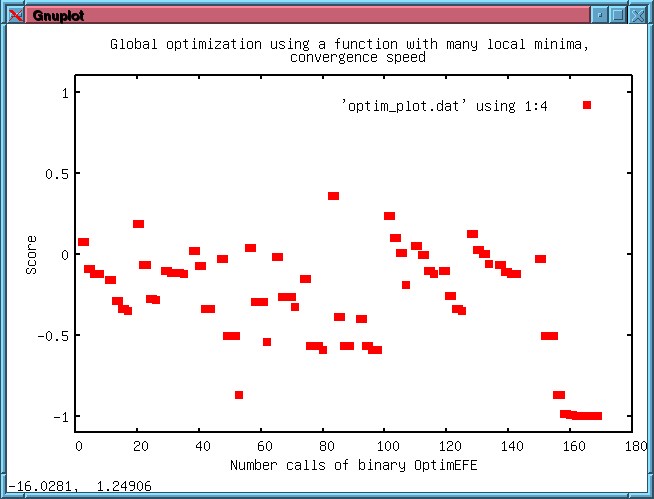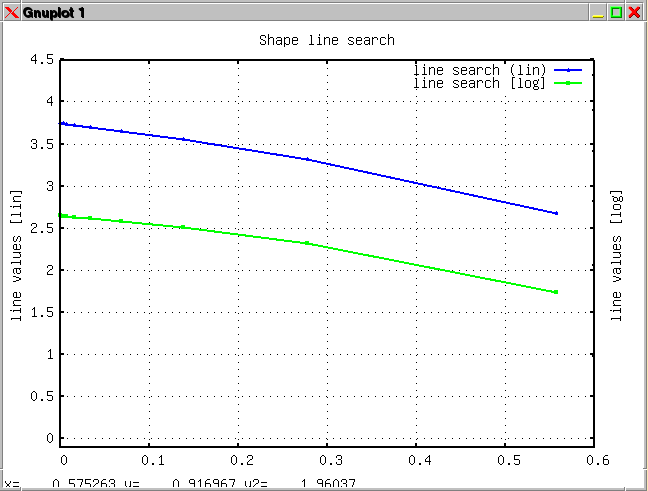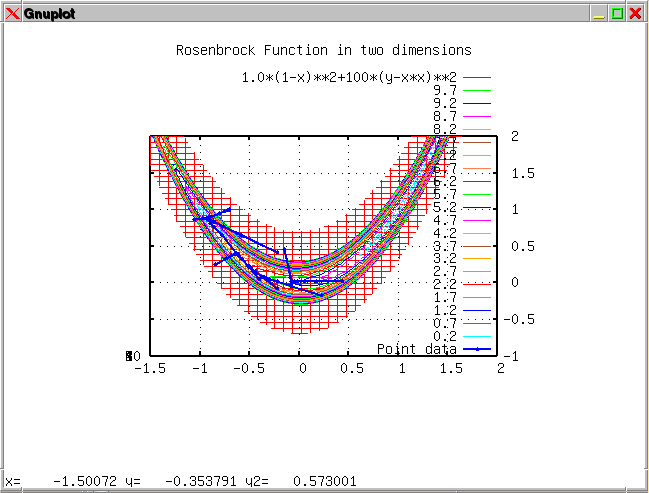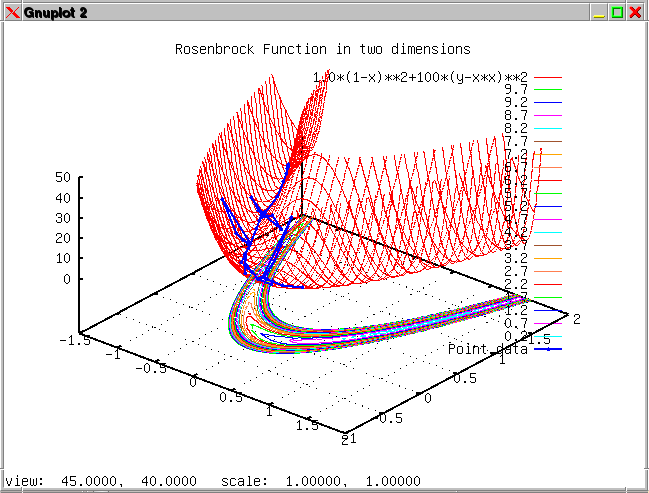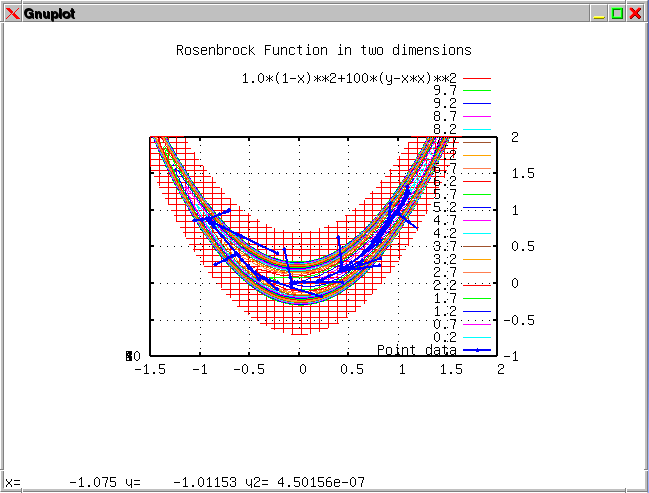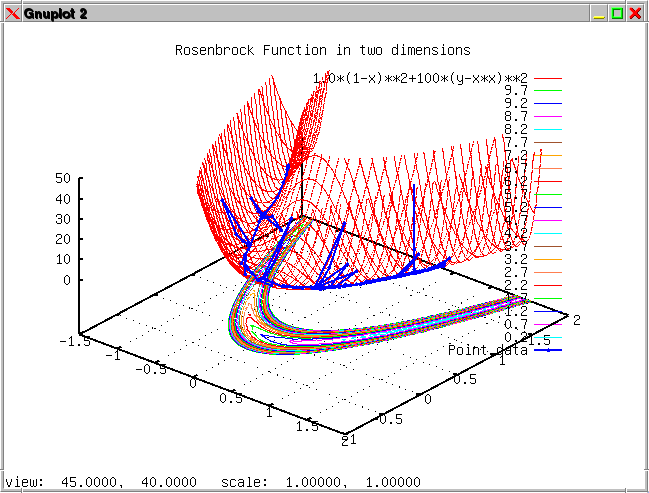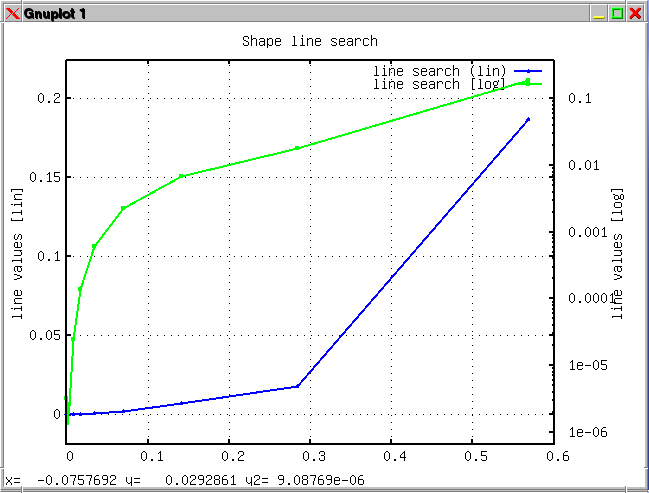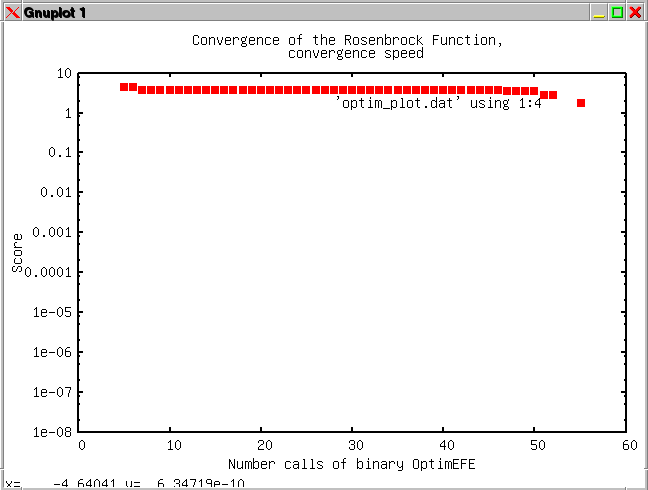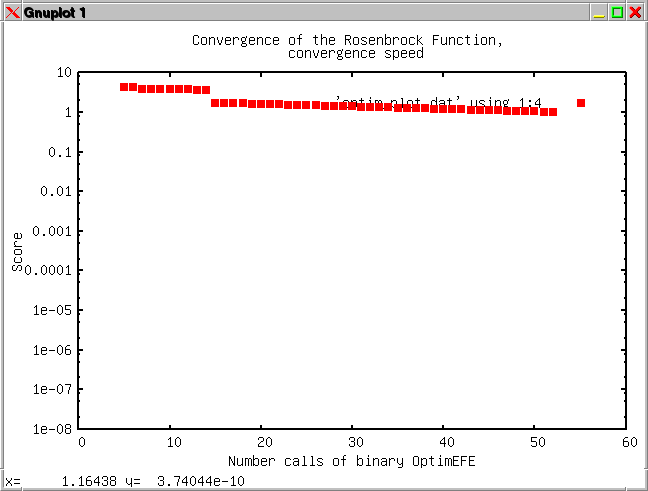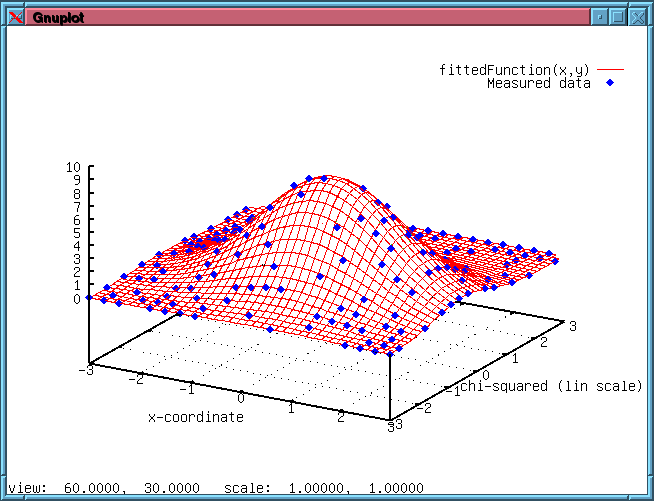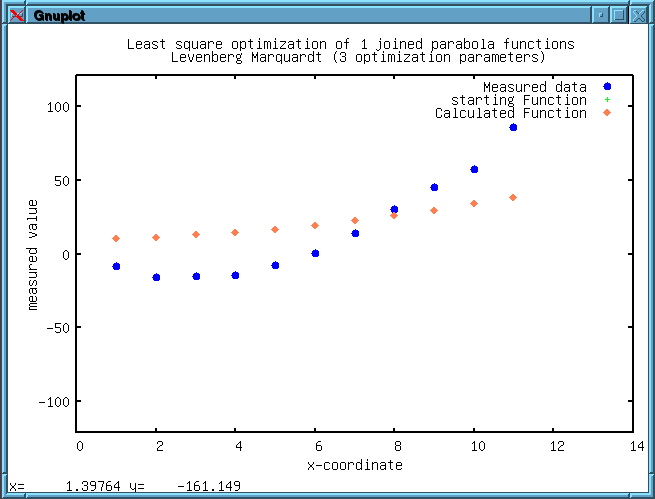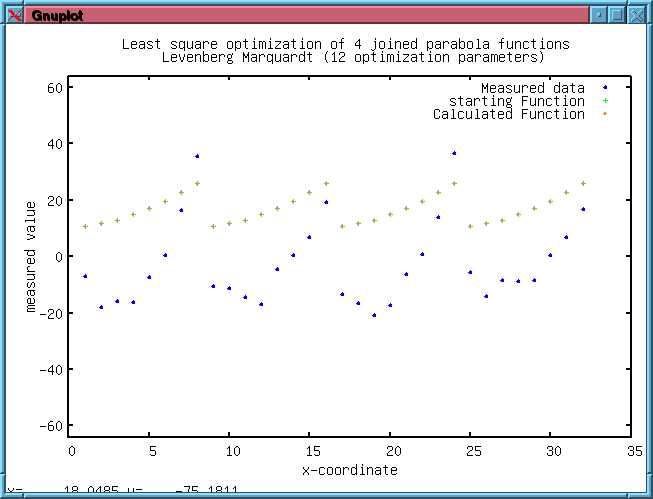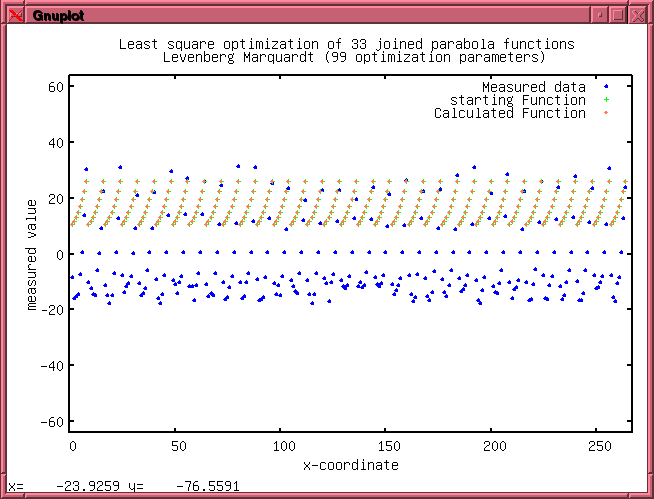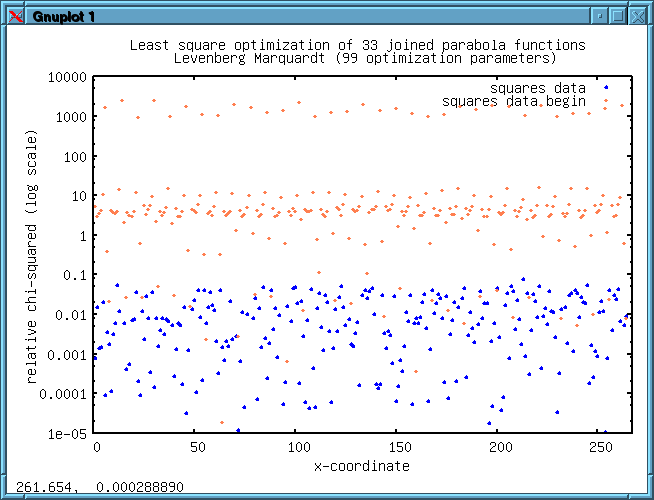OptimEFE v2.2
Optimizer
for External Function EvaluationIntroduction:
The
application field of OptimEFE is to solve the two main technical
problems which are related to function minimizing and least square optimization (curve fitting of
arbitrary dimension).
The least
square optimization is available since version 2.0.
OptimEFE was written to close the gap between a
pure numerical packages like 'matlab, octave,..' on the one side and
external simulators on the other side. These external simulators
response to a request which is defined by the binary OptimEFE. To exchange the data the external
simulators have to write the calculated results in a readable text file.
On the one
hand OptimEFE consists of a single C-file
(OptimEFE.c) which represents after compilation the numerical optimizer.
On the other hand this compiled binary can extract example files
which set up a complete optimization environment.

Example of a schematic flow of the OptimEFE optimization environment. The shell
script controls the flow and call the needed binaries. For more infos
check out the OptimEFE user manual.
The job of
the binary OptimEFE is to define the independent points for
gradient calculation and line minimization, and the external simulator
corresponds to the function evaluation. In reality the function
evaluation is often very time consuming (e.g.finite element (FEM) simulators,..) and
therefore one optimizer cycle is defined by a gradient calculation or
by a line minimization. OptimEFE is written to do all necessary
calculations of one cycle in parallel. In case a problem has five
independent variables, all five external simulator calls for the
gradient calculation are done in parallel and in the next cycle (which
is a line minimization) all specified line points are calculated in
parallel.
OptimEFE provides an interactive mode where the file 'optimizerControl' can be modified for each iteration before it is read.
This allows to change values like parameter boundaries and to control the optimization process in an interactive way.
This is especially useful for time consuming external evaluation which helps to minimize the overall optimization time.
To use the
full functionality of the optimization environment the tools 'bash'
'gnuplot' and 'gawk' are needed.
OptimEFE was alo
tested under the Cygwin environment. In this environment it is
possible to call MS-Windows programs and use the OptimEFE file flexibility for the data exchange.
Again the windows program (e.g. FEM software) which calculates the
response must write a result file in a text format.
The scope of OptimEFE
is to define next experiments and to start new job requests. Normally
the new job requests are sent to a load balancer which again send the
jobs to different machines. OptimEFE does not control the load
and also license and server farm issues are not scope of OptimEFE.
OptimEFE version
2.0 was tested using the linux distributions listed below:
|
|
gcc
|
bash
|
gawk
|
gnuplot
|
|
Cygwin (dll: 1.7.10-1)
|
4.5.3
|
4.1.10-4
|
4.0.0
|
4.4 patch level 4
|
|
OpenSuSE 12.1
|
4.6.2
|
4.2.10(1)
|
4.0.0
|
4.4 patch level 3
|
|
RedHat EL 5.6
|
4.1.2
|
3.2.25(1)
|
3.1.5
|
4.0 patch level 0
|
For further information check out the OptimEFE user manual.
Keywords: optimization, external function binding, external function
evaluation, global optimization, FEM, TCAD
Function
minimizing:
To solve
ill-conditioned problems OptimEFE is based on the conjugate
gradient approach. Also a simple steepest gradient optimization can be
specified. For all independent variables valid ranges must be
specified. Often the independent variables cover different orders of
magnitudes (e.g. ion implant dose (1e15cm-2), distances (1e-6m).
Therefore OptimEFE normalize all independent variables for the
internal calculation. Also a logarithmic scaling of the independent
variables can be specified. This is useful for variables with a
positive variable range (e.g. temperature, time, concentration,...).
After specifying the new cycle points OptimEFE stores the
information in the file 'optimizerOutput' and exit. The results from
the function evaluation are stored in the file 'optimizerInput'.
Together with the file 'optimizerControl' OptimEFE is called
again. Using these two files OptimEFE gets into the old state
and goes on the optimization.
After compiling OptimEFE one can extract six examples (shell
scripts) for function minimizing (command: 'OptimEFE
-generateExampleFiles').
-
The first examples uses an internal function evaluation.
Therefore the source file OptimEFE.c is modified to define the
new function, is recompiled and executed.
-
The second example evaluates an external function with GNU
awk. The results can be extracted from the file 'optimizerLog'. The
examples optimizes an ill-conditioned parabola with 5 independent
variables.
-
The third example again uses an external function. In
contrast to example2 the external simulator binding is much more
sophisticated. For each function evaluation a new directory is created
which name holds the independent variable values. In these directories
a number of result values are calculated but the final function value
is calculated again in the optim_example3 batch file.
-
The fourth
example shows a global optimization of a function which has several
local minima. The global search is done by splitting the complete
function range in small areas and do a minimization on every sub-area.
Finally the sub area with the lowest function value is used for a final
minimization with a higher accuracy.
-
The fifth example
shows a multidimensional optimization of charges on a sphere. The
result is a charge distribution in a minimum electrostatic energy
state. The example demonstrates that problems up to 100 optimization
parameters can be handled with OptimEFE.
-
The sixth example is
similar to example number one except that the evaluation is done with
an external function. The example compares the conjugate gradient with
the steepest gradient approach combined with a logarithmic or linear
scaling of the independent variables (side lengths).
Examples
for function minimizing:
|


